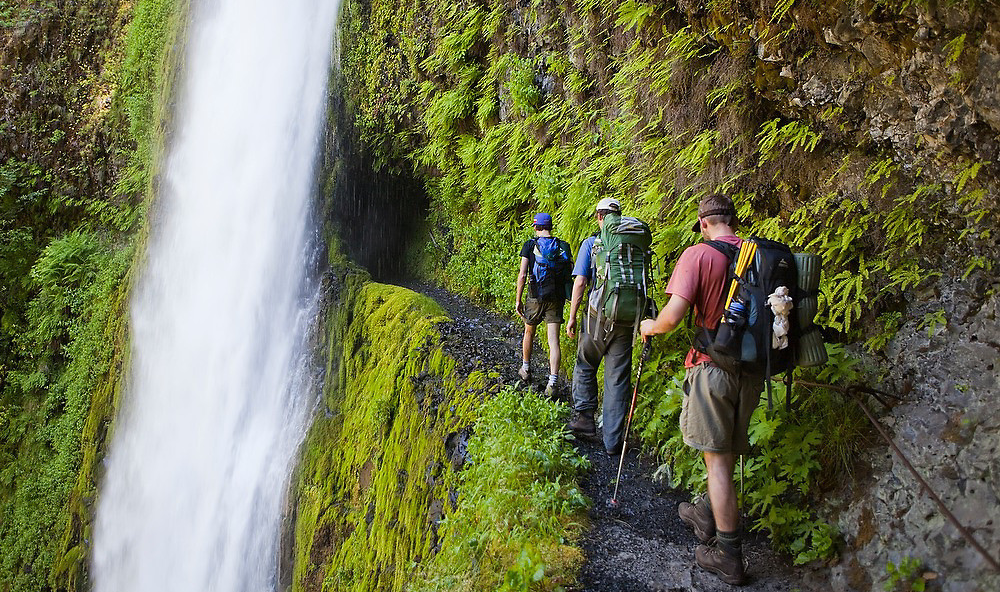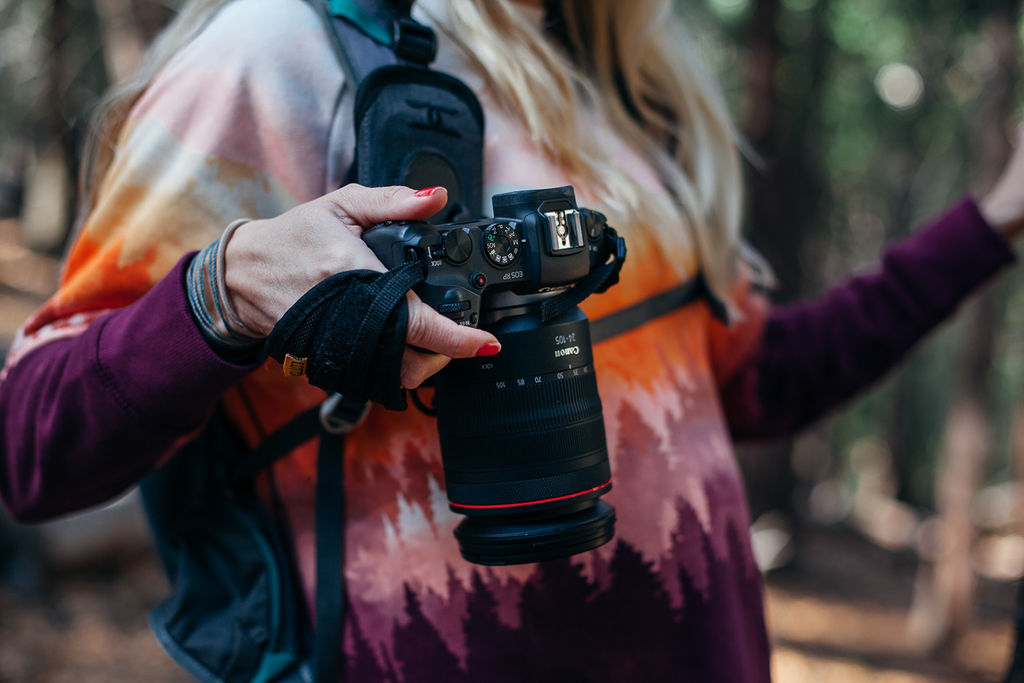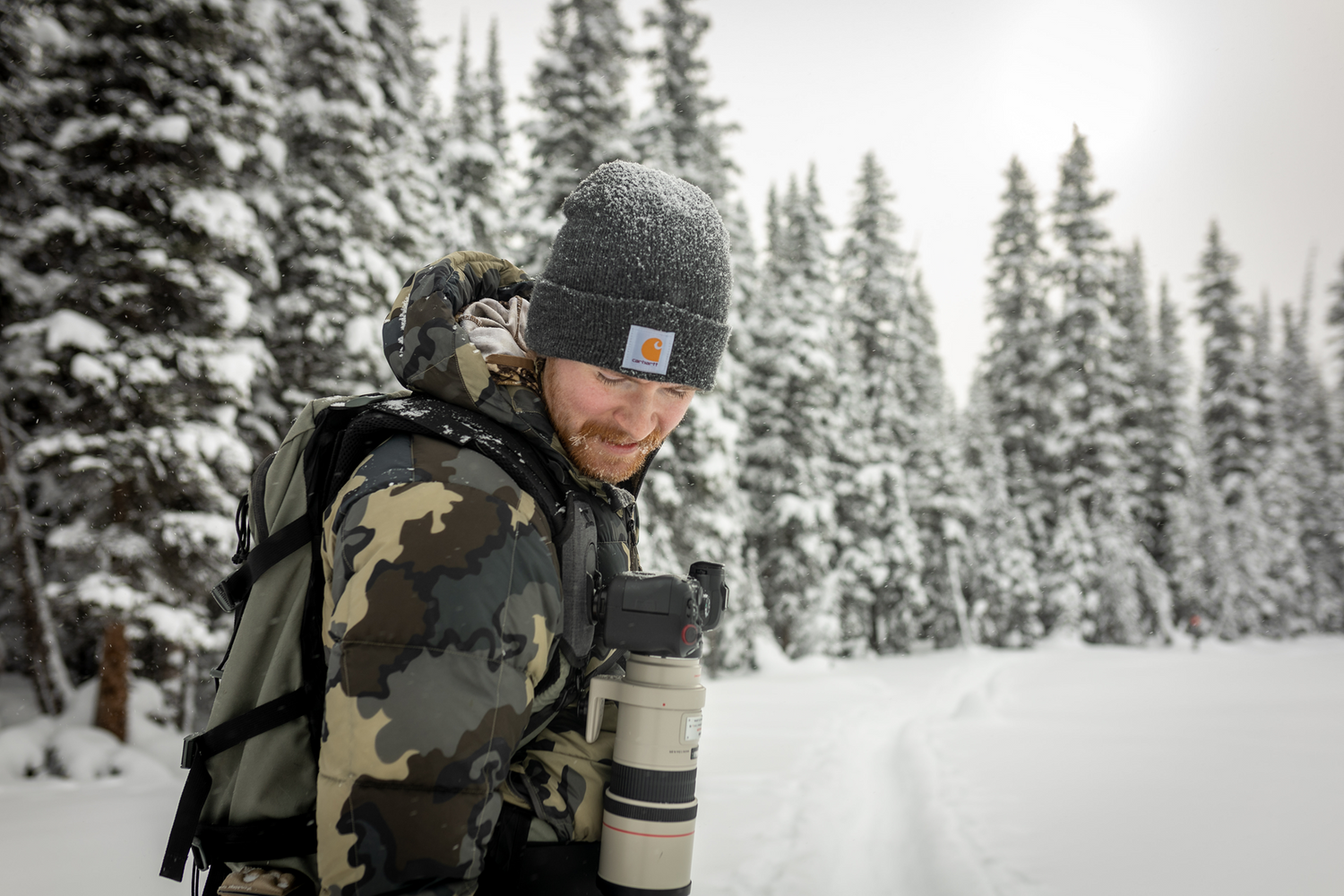There is something uniquely captivating about the combination of hiking and waterfall sightseeing. The journey through nature's pathways, leading to the breathtaking sight and sound of cascading water, offers an unparalleled sense of tranquility and accomplishment. Carrying a camera comfortably can significantly enhance this experience, allowing you to capture and preserve the beauty you encounter along the way.
Why Hike to Waterfalls?
The Beauty and Tranquility of Waterfalls
Waterfalls are nature's masterpieces, offering a serene and majestic beauty that captivates the senses. The sight of water tumbling over rocks, the soothing sound, and the cool mist create a peaceful ambiance that is both relaxing and rejuvenating.
Health Benefits of Hiking and Being in Nature
Hiking is an excellent form of exercise, promoting cardiovascular health, improving stamina, and strengthening muscles. Being in nature also has mental health benefits, reducing stress, enhancing mood, and increasing overall well-being.
Photography Opportunities
Waterfalls provide stunning photographic opportunities. The dynamic flow of water, the play of light and shadow, and the surrounding landscapes create perfect subjects for photography enthusiasts.
Essential Gear for Hiking and Photography
Recommended Hiking Gear
- Sturdy Hiking Boots: Essential for traction and ankle support.
- Weather-Appropriate Clothing: Layered clothing for changing weather conditions.
- Backpack: Comfortable and spacious enough for your gear.
- Water and Snacks: Staying hydrated and energized is crucial.
- Navigation Tools: Map, compass, or GPS device.
- First Aid Kit: For minor injuries and emergencies.
Camera Gear Essentials
- Camera Body: A lightweight yet high-quality camera.
- Lenses: Wide-angle for landscapes and telephoto for detailed shots.
- Camera Harness: To distribute weight evenly and keep your camera accessible.
- Tripod: For stability and long-exposure shots.
- Filters: Polarizing and neutral density filters to manage light and reflections.
- Extra Batteries and Memory Cards: To ensure you don't miss any shots.
Top Hiking Trails with Waterfalls
1. Multnomah Falls, Oregon

Description of the Trail: Multnomah Falls is one of Oregon's most famous and accessible waterfalls, located in the Columbia River Gorge. The trail to the falls is relatively short and well-maintained, making it suitable for hikers of all levels.
Difficulty Level and Length: Easy, 2.4 miles round trip.
Best Time to Visit: Spring and early summer when the water flow is at its peak.
Photography Tips:
- Visit early in the morning to avoid crowds.
- Use a tripod for long exposure shots to capture the silky water effect.
- Experiment with different angles from the bridge and viewing platforms.
2. Havasu Falls, Arizona

Description of the Trail: Havasu Falls is located in the Havasupai Indian Reservation in the Grand Canyon. Known for its striking blue-green waters, this trail offers a challenging but rewarding hike.
Difficulty Level and Length: Difficult, 10 miles each way.
Best Time to Visit: Late spring and early fall to avoid the extreme summer heat.
Photography Tips:
- Capture the falls during the golden hour for the best lighting.
- Use a wide-angle lens to encompass the falls and the surrounding red rock cliffs.
- Bring a waterproof camera or case for shots near the water.
3. Yosemite Falls, California

Description of the Trail: Yosemite Falls is the tallest waterfall in North America, located in Yosemite National Park. The trail offers stunning views of the upper and lower falls as well as the Yosemite Valley.
Difficulty Level and Length: Moderate to strenuous, 7.2 miles round trip.
Best Time to Visit: Late spring when the snowmelt increases the water flow.
Photography Tips:
- Mid-morning light provides the best illumination for the falls.
- Use a telephoto lens to capture the upper falls from a distance.
- Try long exposure shots to highlight the flow of the water.
4. Bridal Veil Falls, North Carolina

Description of the Trail: Located in the Nantahala National Forest, Bridal Veil Falls is an easily accessible and picturesque waterfall.
Difficulty Level and Length: Easy, 0.5 miles round trip.
Best Time to Visit: Spring and fall for vibrant foliage.
Photography Tips:
- Use a tripod for stability.
- Capture the falls from different angles to highlight its veil-like appearance.
5. Rainbow Falls, Tennessee

Description of the Trail: This trail in the Great Smoky Mountains National Park leads to a stunning waterfall known for the rainbows that appear in its mist.
Difficulty Level and Length: Moderate, 5.4 miles round trip.
Best Time to Visit: Early morning in spring and summer.
Photography Tips:
- Shoot in the morning to capture the rainbows.
- Use a wide-angle lens for the best composition.
6. Amicalola Falls, Georgia

Description of the Trail: Amicalola Falls is the tallest waterfall in Georgia, located in the Chattahoochee National Forest.
Difficulty Level and Length: Moderate, 2.1 miles round trip.
Best Time to Visit: Spring and fall.
Photography Tips:
- Use a polarizing filter to reduce glare.
- Capture the falls from the base and the viewing platforms.
7. McWay Falls, California

Description of the Trail: Located in Julia Pfeiffer Burns State Park, McWay Falls is an iconic waterfall that plunges into the Pacific Ocean.
Difficulty Level and Length: Easy, 0.5 miles round trip.
Best Time to Visit: Year-round.
Photography Tips:
- Sunset provides the best lighting.
- Use a telephoto lens to get a closer view.
8. Lower Falls, Yellowstone National Park, Wyoming

Description of the Trail: The Lower Falls in Yellowstone National Park is a powerful and majestic waterfall.
Difficulty Level and Length: Moderate, 1.5 miles round trip.
Best Time to Visit: Summer and early fall.
Photography Tips:
- Use a neutral density filter for long exposures.
- Capture the falls from Artist Point for a classic view.
9. Shoshone Falls, Idaho

Description of the Trail: Known as the "Niagara of the West," Shoshone Falls is higher than Niagara Falls.
Difficulty Level and Length: Easy, 0.25 miles round trip.
Best Time to Visit: Spring when water flow is highest.
Photography Tips:
- Use a wide-angle lens to capture the entire falls.
- Morning light provides the best illumination.
10. Hamilton Pool Preserve, Texas

Description of the Trail: This trail leads to a stunning natural pool and waterfall in the Texas Hill Country.
Difficulty Level and Length: Moderate, 0.5 miles round trip.
Best Time to Visit: Spring and summer.
Photography Tips:
- Use a tripod for stability.
- Capture the falls from different angles to highlight the pool.
11. Silver Falls State Park, Oregon

Description of the Trail: Known as the "Trail of Ten Falls," this park offers multiple waterfalls along a single trail.
Difficulty Level and Length: Moderate, 7.2 miles round trip.
Best Time to Visit: Spring and fall.
Photography Tips:
- Capture each waterfall with different settings for variety.
- Use a polarizing filter to reduce glare and enhance colors.
12. Tahquamenon Falls, Michigan

Description of the Trail: Located in the Upper Peninsula, Tahquamenon Falls is one of the largest waterfalls east of the Mississippi.
Difficulty Level and Length: Easy to moderate, 4 miles round trip.
Best Time to Visit: Summer and fall.
Photography Tips:
- Use a wide-angle lens for the best composition.
- Capture the falls from different viewpoints along the trail.
13. Whitewater Falls, North Carolina

Description of the Trail: This trail leads to the highest waterfall east of the Rockies, located in the Nantahala National Forest.
Difficulty Level and Length: Moderate, 1.5 miles round trip.
Best Time to Visit: Spring and fall.
Photography Tips:
- Use a telephoto lens to capture details from a distance.
- Morning light provides the best illumination.
14. Fall Creek Falls, Tennessee

Description of the Trail: Fall Creek Falls is the highest free-fall waterfall east of the Mississippi, located in Fall Creek Falls State Park.
Difficulty Level and Length: Moderate, 2.6 miles round trip.
Best Time to Visit: Spring and summer.
Photography Tips:
- Use a tripod for long exposure shots.
- Capture the falls from the base and the overlooks.
15. Proxy Falls, Oregon

Description of the Trail: Proxy Falls is a stunning waterfall located in the Willamette National Forest.
Difficulty Level and Length: Easy, 1.5 miles round trip.
Best Time to Visit: Late spring to early fall.
Photography Tips:
- Use a wide-angle lens to capture the full height of the falls.
- Experiment with different shutter speeds for various water effects.
16. Vernal and Nevada Falls, California

Description of the Trail: This trail in Yosemite National Park offers views of two stunning waterfalls.
Difficulty Level and Length: Strenuous, 7 miles round trip.
Best Time to Visit: Spring and early summer.
Photography Tips:
- Use a polarizing filter to enhance colors and reduce glare.
- Capture both falls from the Mist Trail for a unique perspective.
17. Alamere Falls, California

Description of the Trail: Located in Point Reyes National Seashore, Alamere Falls is a rare tidefall that flows directly into the ocean.
Difficulty Level and Length: Moderate, 8.4 miles round trip.
Best Time to Visit: Spring and summer.
Photography Tips:
- Use a wide-angle lens to capture the falls and the beach.
- Visit during low tide for the best access and views.
18. Ruby Falls, Tennessee

Description of the Trail: Ruby Falls is an underground waterfall located in Lookout Mountain Caverns.
Difficulty Level and Length: Easy, guided tour of 1 mile.
Best Time to Visit: Year-round.
Photography Tips:
- Use a tripod for stability in low light conditions.
- Capture the falls with the cave's lighting for dramatic effects.
19. Bridalveil Fall, California

Description of the Trail: This iconic waterfall is located in Yosemite National Park and is easily accessible.
Difficulty Level and Length: Easy, 0.5 miles round trip.
Best Time to Visit: Spring when the flow is strongest.
Photography Tips:
- Use a polarizing filter to reduce glare.
- Capture the falls from Tunnel View for a classic shot.
20. Cumberland Falls, Kentucky

Description of the Trail: Known as the "Niagara of the South," Cumberland Falls is located in Cumberland Falls State Resort Park.
Difficulty Level and Length: Easy to moderate, 1.5 miles round trip.
Best Time to Visit: Spring and fall.
Photography Tips:
- Use a tripod for long exposure shots.
- Capture the moonbow during a full moon for a unique effect.
Tips for Photographing Waterfalls
Best Camera Settings and Techniques
- Shutter Speed: Slow shutter speeds (1/4 to 2 seconds) to capture the smooth, silky water effect.
- Aperture: A smaller aperture (f/11 to f/16) for greater depth of field.
- ISO: Keep it low (100-200) to reduce noise.
How to Deal with Challenging Lighting Conditions
- Use a polarizing filter to reduce glare and enhance colors.
- Shoot on cloudy days for even lighting.
- Employ HDR techniques for high-contrast scenes.
Composing the Perfect Shot
- Use leading lines, such as the flow of the water or surrounding rocks, to draw the viewer's eye.
- Include elements of the landscape to provide context and scale.
- Experiment with different perspectives and angles.
Hiking to waterfalls combines the physical benefits of outdoor activity with the visual and emotional rewards of witnessing nature's beauty. Whether you're a seasoned photographer or a casual hiker, these trails offer incredible opportunities to capture stunning images and create lasting memories. Don't forget to share your photos and experiences with fellow enthusiasts and use one of our camera carriers to keep your gear secure and accessible on your next adventure.





